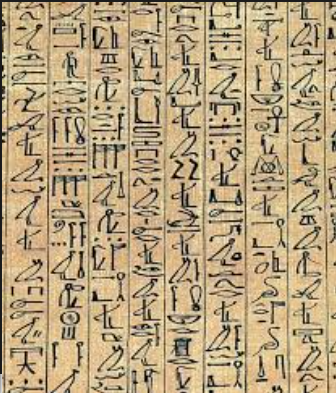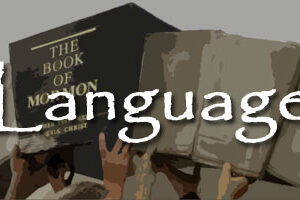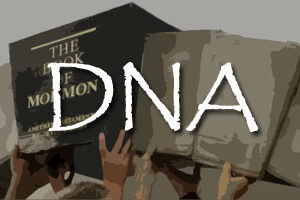Reformed Egyptian
In 1680 Father Chretian Le Clercq a Roman Catholic missionary lived among the Micmac Indians for twelve years. After spending this time with the Micmac, he then sailed back to France and wrote a book about the customs and religion of the Micmac Indians.
He helped the Micmac Indians develop a written language composed of Hieroglyphs. He most likely used the characters that the Micmac Indians were already familiar with. That he saw the Mic Mac Indians writing on birch bark when he first arrived. If Clercq himself had developed the written language he most likely would have used the Latin alphabet. Why would he use Egyptian hieroglyphs but most importantly how did he know the meaning of the hieroglyphs that he used. Egyptian hieroglyphs were undecipherable until 1820 when the Rosetta stone was discovered and allowed for the understanding of the ancient Egyptian written language. The chances of four characters being a coincidence has to be mathematically impossible.
Nephi describes their written language as reformed Egyptian.
The majority of MicMac characters are probably reformed Egyptian if not all of them.
The Anthon Transcript is the piece of paper on which Joseph Smith transcribed characters from the golden plates so that he could show Dr. Charles Anton. Anton was an Egyptologist that was confirm the validity of the golden plates translation. Per the history, Anton described the characters as Egyptian, Chaldean and Assyrian.
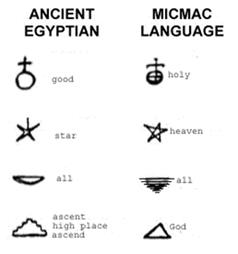
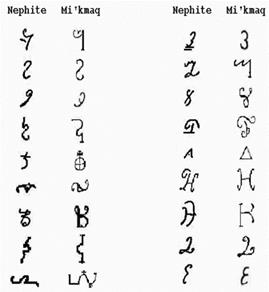
http://bookofmormonevidence.blogspot.com/2016/09/native-american-egyptian-hieroglyph.html
